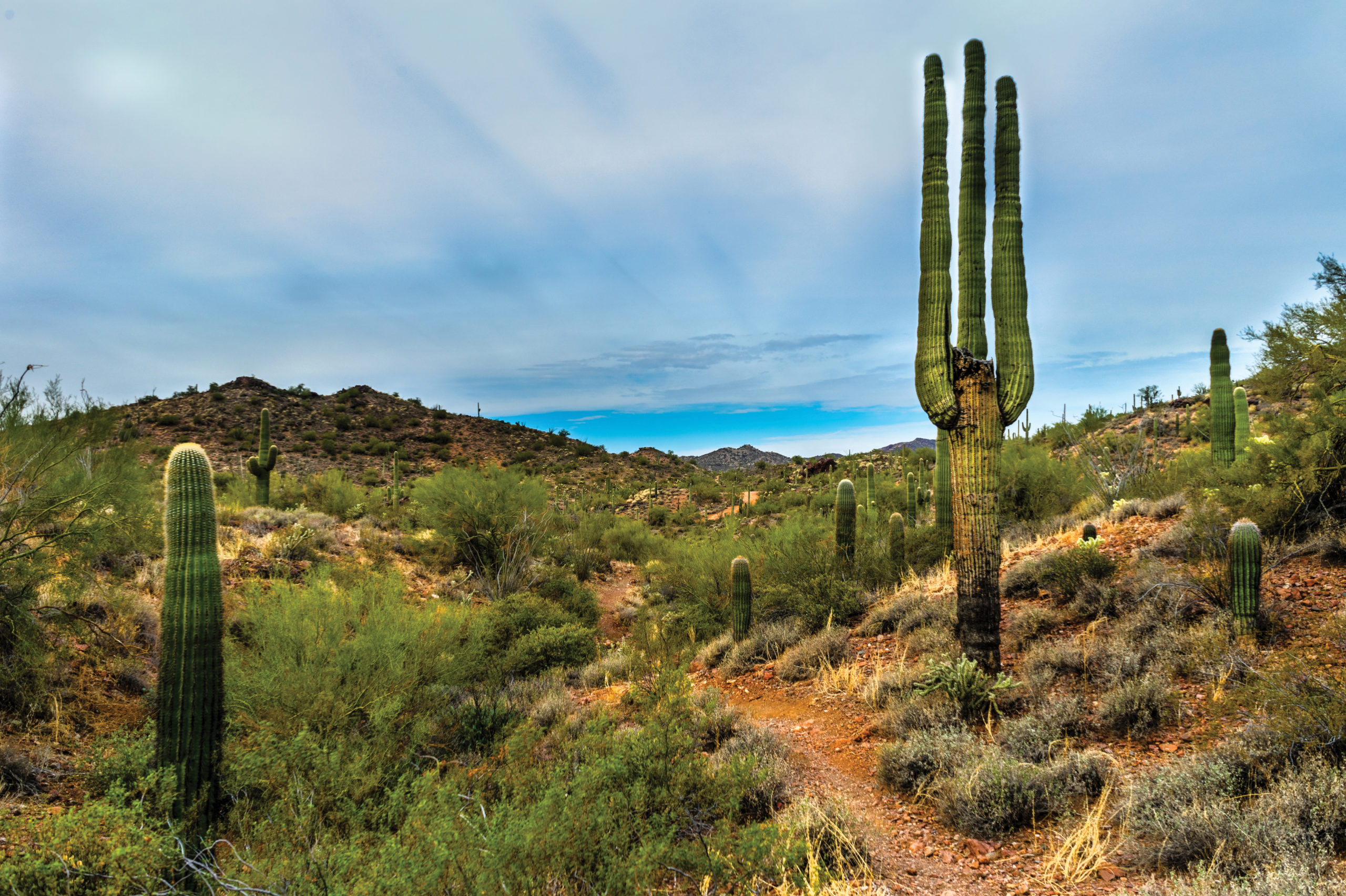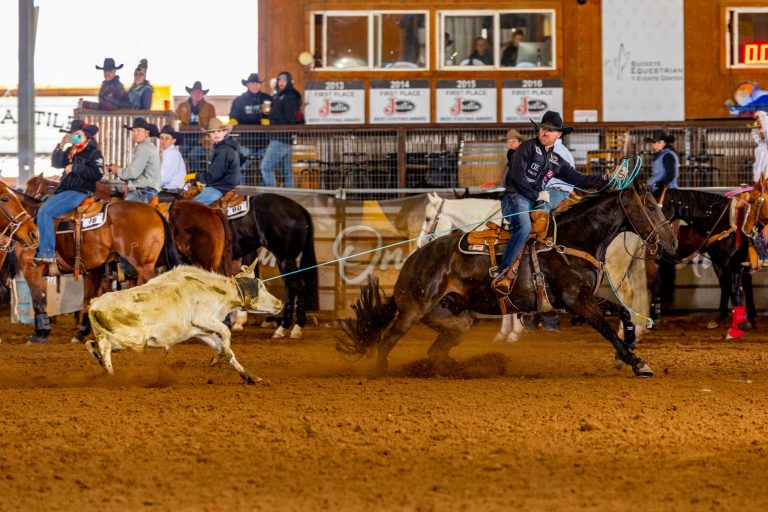If you haven’t heard about the dozens of headers and heelers who relocated over the past decade to Stephenville, Texas, or Wickenburg, Arizona, then you’ve been under a rock. We decided to shed some light on just why certain places are popular with team ropers, plus give you all the details on a handful of other hot spots in which to make yourself a home and throw a loop or two.
Sun City
The mass winter migration of ropers to the greater Phoenix area has almost outgrown the significant roping infrastructure. People have realized that Arizona’s beautiful weather and staggering choices of jackpot formats, arenas and producers aren’t going away anytime soon. The rodeo scene is fantastic—especially the junior rodeo associations in many suburbs and statewide. Plus, Phoenix offers great employment opportunities, good schools, and flat-out nice society—but also still has plenty of open space.
“Arizona’s just one of those states where people want to be,” said Barbara Miller, who’s been selling single-family homes, horse properties and ranches in Arizona for 30 years. “And in the summer, if you don’t like the heat, just drive up the mountain two hours to Flagstaff for the weekend. Or you can go visit all those people that visit you in the winter. Take a couple of weekend trips, and pretty soon the summer’s gone. It’s not as bad as everybody thinks.”
Arizona Evolution: How Arizona Became the Hot Spot For Team Roping
She gets the most calls about places available in Cave Creek and Wickenburg. Miller said people only looking for a winter home tend to like Wickenburg for its focus on team roping, while year-round hopefuls prefer Cave Creek because it offers so many more amenities—from good vets and doctors to museums, shopping and restaurants. As far as price, Wickenburg used to be a lot less expensive, Miller said, but demand has pushed its prices to roughly the same.
“The trouble is, we’re short on inventory,” she said. “And not just horse property, but everything. Horse properties are really hard to find, and something for below about $550,000 is almost impossible.”
Lest you want to buy an acre or two with a couple of stalls where you can simply park your living-quarters at first, think again. In this state, it’s not legal to run electricity to a property unless it has a living structure on it. Furthermore, building anything including a barn apartment is incredibly difficult to do in Maricopa or Yavapai County because of zoning regulations. But here’s the great news—the area is seeing 15% to 20% increases in home values.
“Cave Creek, in particular, is appreciating like that,” Miller said. “So if you invested last year, you’d be making a minimum 15% on your property.”
Her advice is to first spend a winter in Arizona, even if it’s in an RV, so you can explore the myriad places available within 150 miles of Phoenix, including Prescott. But even in suburbs like Queen Creek or Surprise, horse properties abound and no metropolis has a better interstate system than Phoenix. The easy 303, 101 and 202 loops take you to any of some four ropings per day within an hour.
“While it might sound expensive, land values here are still 50% to 60% below what they were when they hit the highs,” Miller said. “Compared to other states, Arizona is still a very good investment. Don’t be afraid of coming down here, because values will hold and they’re underpriced compared to other locations. Even Texas is getting very pricey.”
Miller (Barbara.Miller@russlyon.com) and her husband, two-time world champion header John Miller (928-699-1111), and their daughter, two-time WPRA world champion header Mary Ann Miller, all sell for Russ Lyon/Sotheby’s (russlyon.com/carefree-cave-creek).
Central Rocky Mountains
For anyone looking for a place not too hot and not too cold, Colorado is tough to beat—and not just because it’s the corporate headquarters of this magazine.
“There are plenty of indoor ropings during the winter months, and our mild Rocky Mountain temperatures mean outdoor summer roping is great,” said Jan Johnson of Re/Max (houseandhorse.com).
Johnson said steers aren’t hard to come by and hay is plentiful and affordable, too.
“We have some snow and cold snaps each winter, but with more than 300 days of sunshine per year and ridiculously low humidity, most folks ride all winter,” she said. “And the cool weather means fewer bugs, so we don’t worry about termites or chiggers along the Front Range. Not only that, but our ground is good and sand is plentiful for your prospective arena.”
Denver, at its heart, she said, is still a “cow town,” which is why companies like Cinch and Roper choose to headquarter there. From the National Western to the Greeley Stampede, the rodeo and concert scene is rich.
“A quick drive north takes you to the Daddy of ’em All in Cheyenne, and the PRCA is headquartered just down the road in Colorado Springs,” she added.
Like Arizona, it’s a place people simply want to live. High tech is the main industry along the Front Range, which attracts people with deeper pockets and that means your property will hold its value. Over the past decade, Colorado has seen a staggering appreciation in property values.
Pricing radiates out from key cities, Johnson said. So if you want an easy commute to Denver or Boulder, you’ll pay more. But a wide variety of places are available, from 5-acre hobby farms to full-sized event and training facilities with exquisite barns and indoor arenas, as well as working ranches.
Folks looking for that cooler summer weather can also find it in Wyoming, Montana and South Dakota.
“One of the best locations for a team roper because of its ‘banana belt’ climate is eastern Wyoming,” said Cory Clark of Clark & Associates Land Brokers (clarklandbrokers.com; 307-351-9556; clark@clarklandbrokers.com). “Torrington is home to Eastern Wyoming College and boasts a nice fairgrounds with an indoor barn that plays host to World Series events and weekly barrel racing jackpots. The climate there allows you to be able to rope outside for most of the year, plus it’s only about an hour to Cheyenne, which hosts arguably the best World Series in the country every summer,” he added.
Most Clark & Associates (C&A) agents have rodeo backgrounds and sell land in six states in this area. They’ve fielded half a dozen inquiries lately from southerners looking to buy a second place in Wyoming from which to rodeo in the summer. There’s no income tax in Wyoming, a super low cost of living, and enough money to pay teachers well, so it boasts some of the best schools in the nation.
“Another influence has been the lockdowns in some states due to the coronavirus pandemic,” Clark said. “Over the past 18 months, South Dakota and Wyoming have imposed far fewer restrictions. Montana, too, just elected a roping-friendly governor. Interstate travel is easy between these areas, and there’s a staggering amount of recreation and amenities in these three states.”
Billings, Montana, is actually home to the country’s biggest team roping producers.
“The Wrangler Team Roping Championships is very big and has been for a long time, reaching into North and South Dakota, Nebraska, and even Canada when the border is open,” said C&A’s Denver Gilbert, whose wife, Jenny, owns Go Rope Clothing out of Billings. “A lot of people summer here and spend winters in Arizona or Texas.”
Thanks to the Paramount TV series “Yellowstone,” Gilbert said, multitudes of people show up looking to buy the fictional Yellowstone ranch. But Billings, in real life, is growing in both directions along the Yellowstone River.
“Billings is right on the fringe of what I call the ‘Yellowstone mentality,’” he said. “You get the best of both worlds—it’s still very blue collar, but you’re within minutes of great mountains. It has a little of everything.”
As for his native state of South Dakota, Gilbert likes to say that what it lacks in scenery, it makes up for in common sense. The state has a phenomenal amateur-rodeo scene, good roping facilities, and consistent efforts to bring in great bronc ridings and other events.
“Plus, for the same price as many places down south, you can get triple your value, or two-thirds more property up here for your money, depending on the location,” Clark said.
These states all offer large horse properties already set up for you and available on hundreds of acres, and they boast some of the best horse vets in the world. Finally, over the years, land here has typically appreciated 4%–6% per fiscal year.
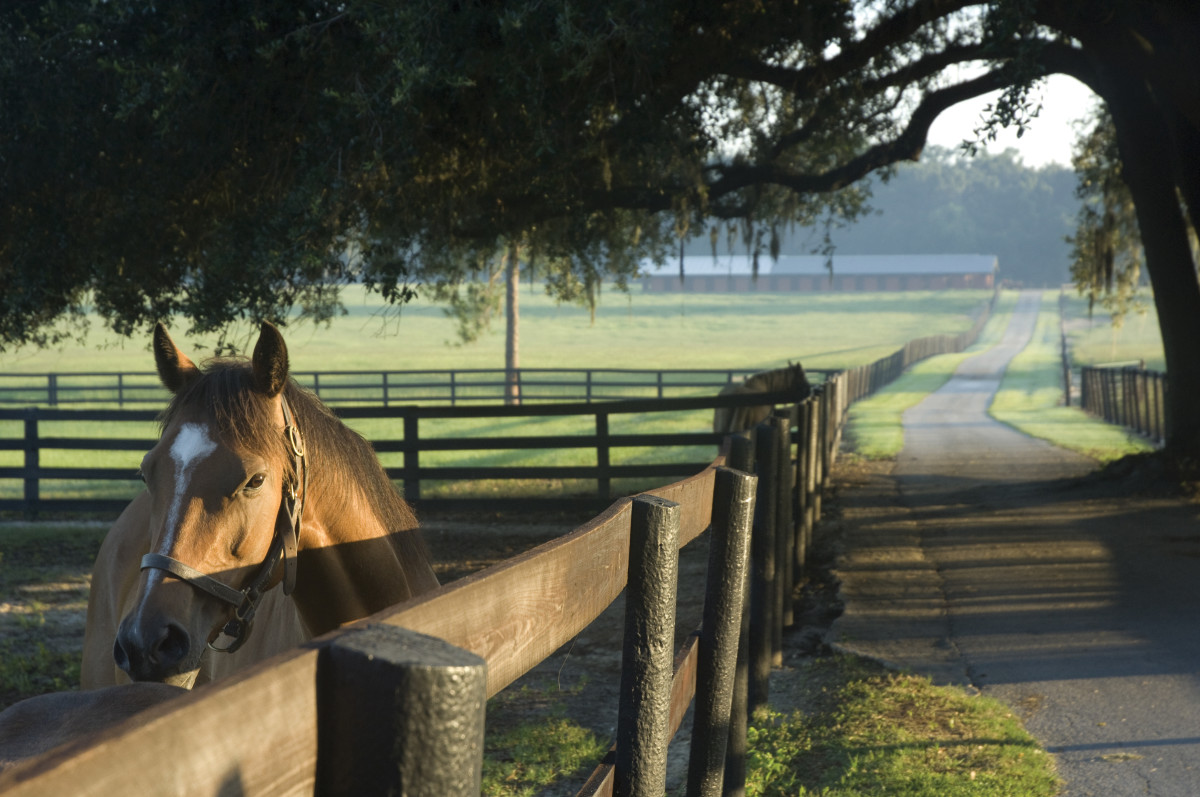
North Central Florida
While people typically envision beaches when they think of Florida, they should instead envision lots of roping. That’s according to Greg Lord, who, with his daughter, Amy, owns Homes To Ranches Realty based in Ocala (homestoranches.com; greg@homestoranches.com; 352-266-6180).
“There’s usually a jackpot within an hour’s drive four times a week, and you have your choice on the weekend, so you can rope all you want,” he said, while running steers in March at his 60-acre Ocala home.
All winter, the weather hovers in the 60s and 70s with just a few frosts. And while the coasts of Florida get all the attention, the interior is straight agriculture and tourism, Lord said. Florida is among the top cattle-producing states in the nation. Ocala, in particular, is horse country.
“North Central Florida is the place to be,” Lord said. “Around Ocala, the horse industry is so diverse—there’s everything. You’ll come in as a team roper and make friends and end up going to a great reining-horse show or polo game.”
And the weather is so spectacular, he figures there are only three days a year you can’t ride.
“Summertime is not miserable,” Lord added. “That’s the biggest misconception. You can ride virtually any time of the day, and we go to ropings in the middle of the day in summer. A cool breeze comes through! So if you’re sitting in the shade with that cool breeze, it’s good even if it’s 95 degrees.”
Like everywhere else, inventory in north central Florida is diminishing rapidly, he said. Prices average from $10,000 to $25,000 an acre, depending on how far out of town you go. Ten-acre parcels are most common for horse properties, he said, and it’s easier to find something already developed than to build.
“The ground is so good that people can fence an area and tear the grass up, and the footing is almost as good as if they hauled in professional footing,” he said. “Nine out of 10 personal arenas are native ground.”
If you get tired of saddling up, it’s just a little over an hour to the Atlantic, or the beaches of the Gulf Coast are an hour and a half away. To go fishing is just 45 minutes, and just over an hour’s drive gets you to Orlando for the kids or to the airport or to Tampa. Football, anyone?
“We are so centrally located we can do virtually anything,” Lord said. “If you want to go have dinner on the beach, that’s not uncommon. Most of us who rodeo are used to driving an hour somewhere.”
Lord reports that the brand-new, $300 million World Equestrian Center in Ocala is the nicest in the country and maybe the world. It’s the largest equestrian complex in the United States, with climate-controlled stall barns, 22 outdoor arenas and four air-conditioned indoor arenas, a five-story hotel and RV park, plus on-site dining. And Lord and his daughter and son—all of whom roped at past Ariat WSTR Finales—have seen some good facilities.
“People are moving to Florida from all over the world,” Lord said. “You just fall in love with it. People come here and just fall in love with it.”
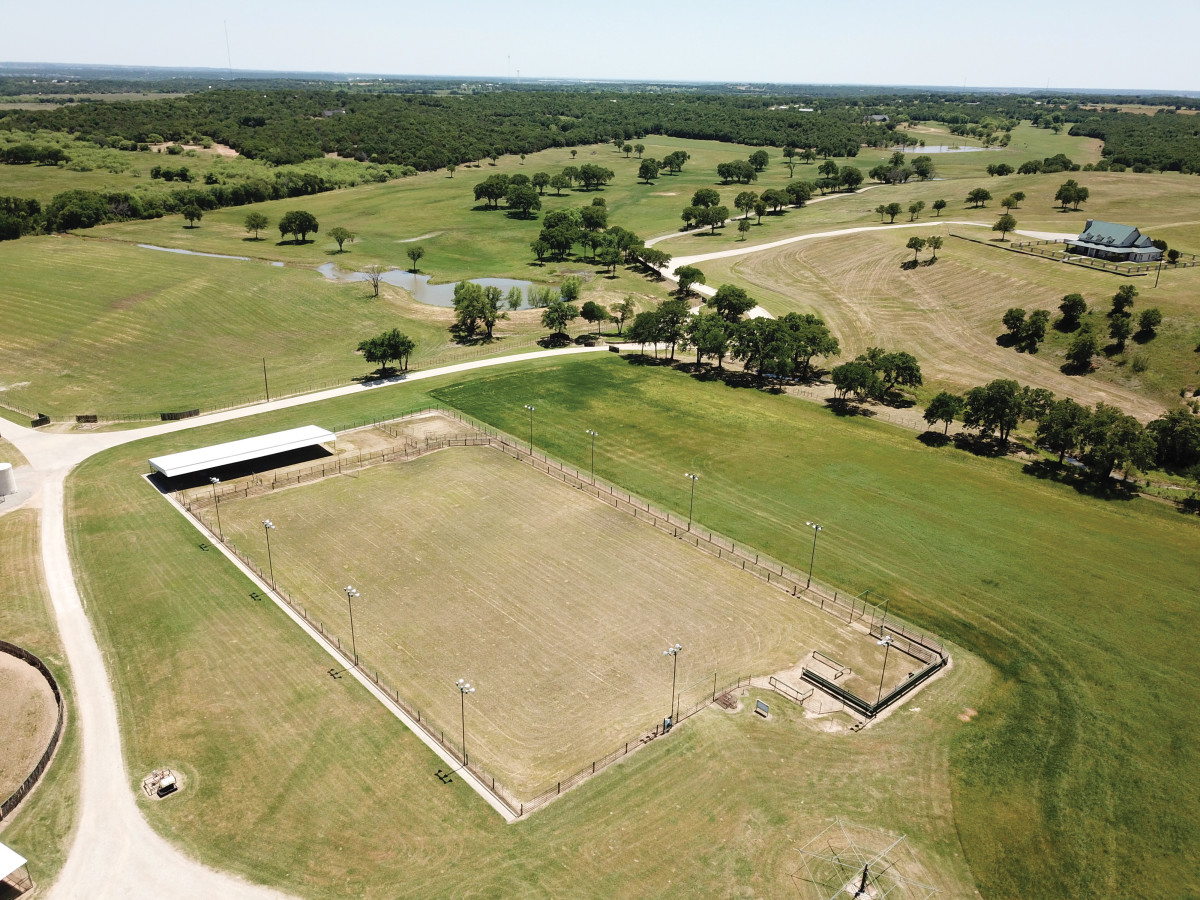
The “Cowboy Capital”
Much like in Arizona, inventory is exceedingly low in Texas, according to Molly Powell. She’s an NFR barrel racer married to world champion header Turtle Powell; they live near the “Cowboy Capital” town of Stephenville. People flock to the pretty rolling hills southwest of Fort Worth because it’s “the perfect union of weather and horse country,” Powell said. Plus, the investment is sound considering the Texas economy is always insulated by oil, which is going up now.
“The sandy loam soil makes it a great place to keep horses, build arenas and grow Bermuda grass, and we have the best vets in the country,” she said.
The other big draw is the area’s proximity to hubs of major team roping events in Fort Worth, Oklahoma City and San Antonio, plus big local events in Hamilton, Glen Rose, and Stephenville. The local Lone Star Arena was for sale again at press time, largely because it stays so insanely busy that owners get a bit overwhelmed.
Around Stephenville, it’s increasingly difficult to find any horse property under $550,000, Powell said.
“The price of land has gone up to at least $10,000 an acre within 10 minutes of Stephenville,” Powell said. “It’s getting to the point it’s nearly as pricey as land around Fort Worth. I really like the city of Granbury, so I’ve been pushing people toward it, as well as Tolar and Bluff Dale, just because inventory is so limited around Stephenville. Land is nice out there, with an easy commute to Fort Worth.”
Higher-end properties can be found north, toward Weatherford, and decrease in price the farther south and west you go, she said.
“You might think about getting your hands on some land and building a steel ‘barndominium,’ considering wood is at a premium now,” Powell said. “I saw a beautiful one the other day that had stone accents, a copper roof and wraparound porch. It was breathtaking.”
You might wonder, considering the size of Texas, if Stephenville is really the best spot. Powell said she and Turtle considered buying ranch land and relocating south, closer to where he works, but realized they’d be completely out of the vicinity of rodeo. And, personally, she doesn’t prefer east Texas.
“In the past year or two, I’d say this area is like the new Arizona,” she said. “There are so many numbered jackpots within an hour of Stephenville that it seems like this really, truly is where it’s at. It just depends on how far out you want to go.”
Land has gone up so much that she suggests you build. And Powell, who sells for Keller Williams (facebook.com/MollyPowellRealtor), said she’s happy to help you find local construction or service companies and even guidance on local culture when you land in the area.
And if you’d rather be a little farther away from the big cities and busy streets, the Texas Panhandle offers tons of ropings, from Ariat World Series of Team Roping qualifiers to USTRC ropings and, of course, the Spicer Gripp Memorial.
“There are five indoor roping arenas in Amarillo,” said long-time Texas realtor JT Haynes (trianglerealtyllc.com). “The opportunities for somebody are really great. You don’t even have to own your own cattle, because there are a lot of places to rope. And if you want to build your own arena, drill stem pipe is easy to come by.”
Ranch land in Amarillo goes for about $1,000 an acre, and there’s plenty available for ropers looking to put down roots in Texas without the price tag of the big cities.
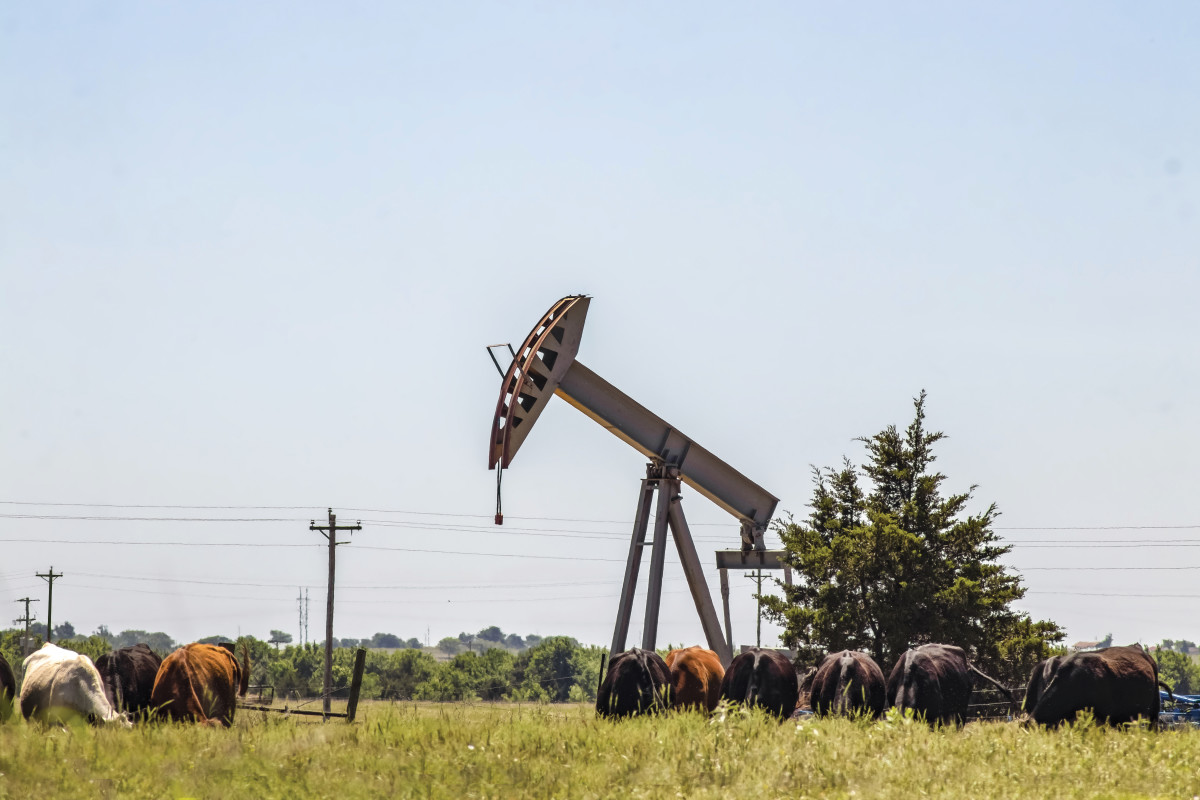
The Sooner State
For pure horse country, tons of roping and great weather, it’s hard to beat Oklahoma—especially the Oklahoma City area. Lately home to the BFI, and as the longtime home of the USTRC Finals, the area isn’t just limited to team roping. For breakaway ropers and barrel racers, the multi-million-dollar Pink and Ruby Buckle events at the Lazy E are huge draws, for instance.
“We’re centrally located, prices are good, everybody’s friendly here and we still have that small-town feel,” said wife and mother Nichole Noel, who trains horses along with her husband and sells real estate for Oklahoma City-based Exit Realty Premier (exitrealtypremierok.com; nnoel369@aol.com; 405-703-3565). “From here, you can go into the city and get all your shopping done, but drive 15 minutes and be in the country. That’s huge.”
Noel said property taxes are less expensive in Oklahoma than many places and the cost of living overall is good, from cheaper hay (lots of green grass everywhere) to more reasonable home prices in general. You can plunk down $1.6 million and get the indoor arena, 50-stall barn and horse walker, or just spend $175,000 and get a little bit of land and a two-stall barn. There’s a large variety of inventory.
“What’s kind of nice about Oklahoma is that properties cater to horse people,” Noel said. “You can find anything you want, and get a lot more bang for your buck here.”
After all, Oklahoma has been a cowboy state virtually forever. Many a rodeo great was an “Okie” and the state remains a roping-friendly place even during the pandemic, as the Lazy E accommodates more events than ever.
“Summers are humid, but once you live here you kind of adapt,” Noel said. “Overall, the weather is really good; you can ride year-round here and not have to be hoarded up in an indoor arena for the winter.”
For good reason, properties are going fast.
“We’ve been having out-of-staters not even come look at a property, but just see pictures and make an offer, because they know it won’t last,” said Noel.




